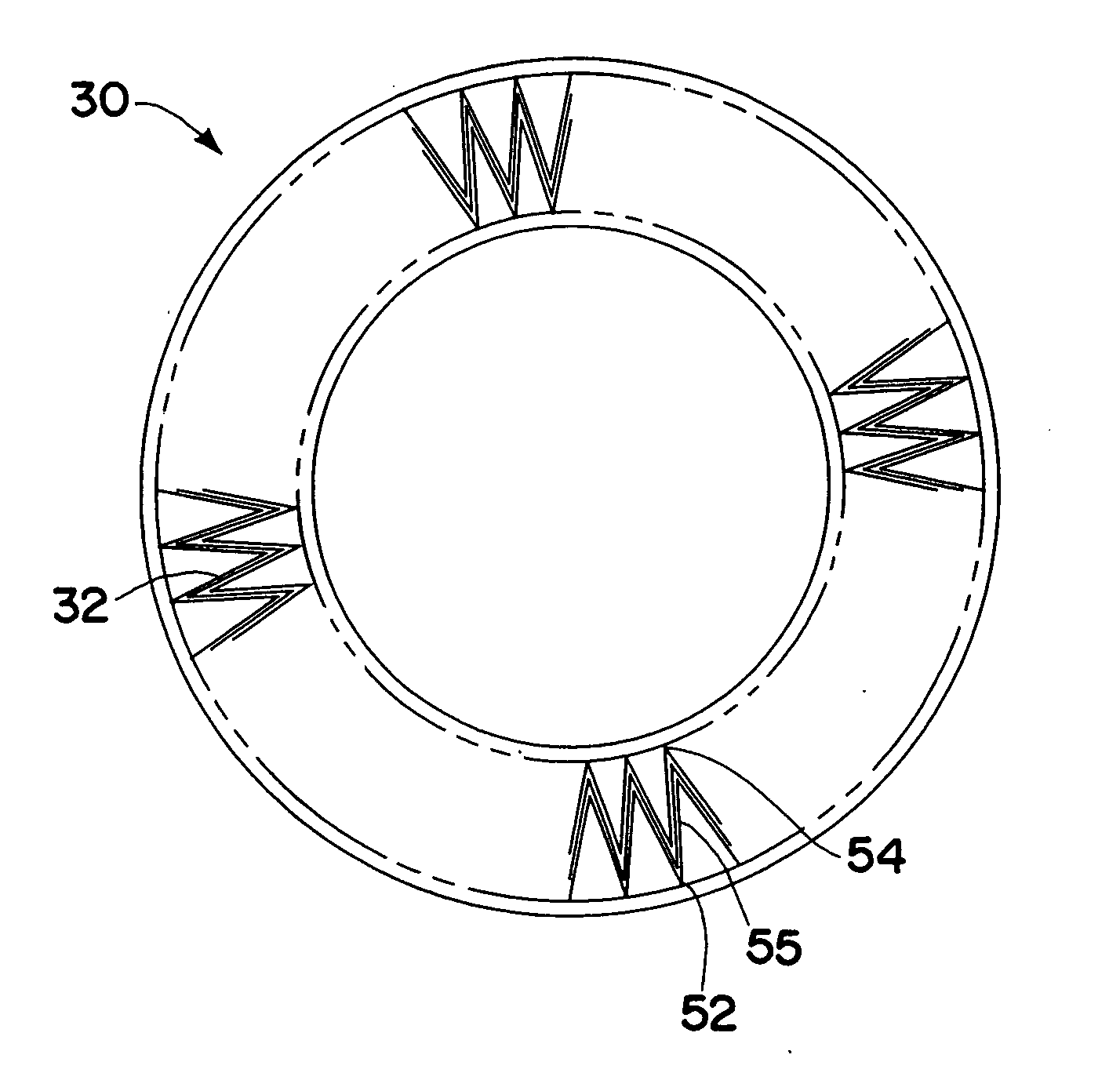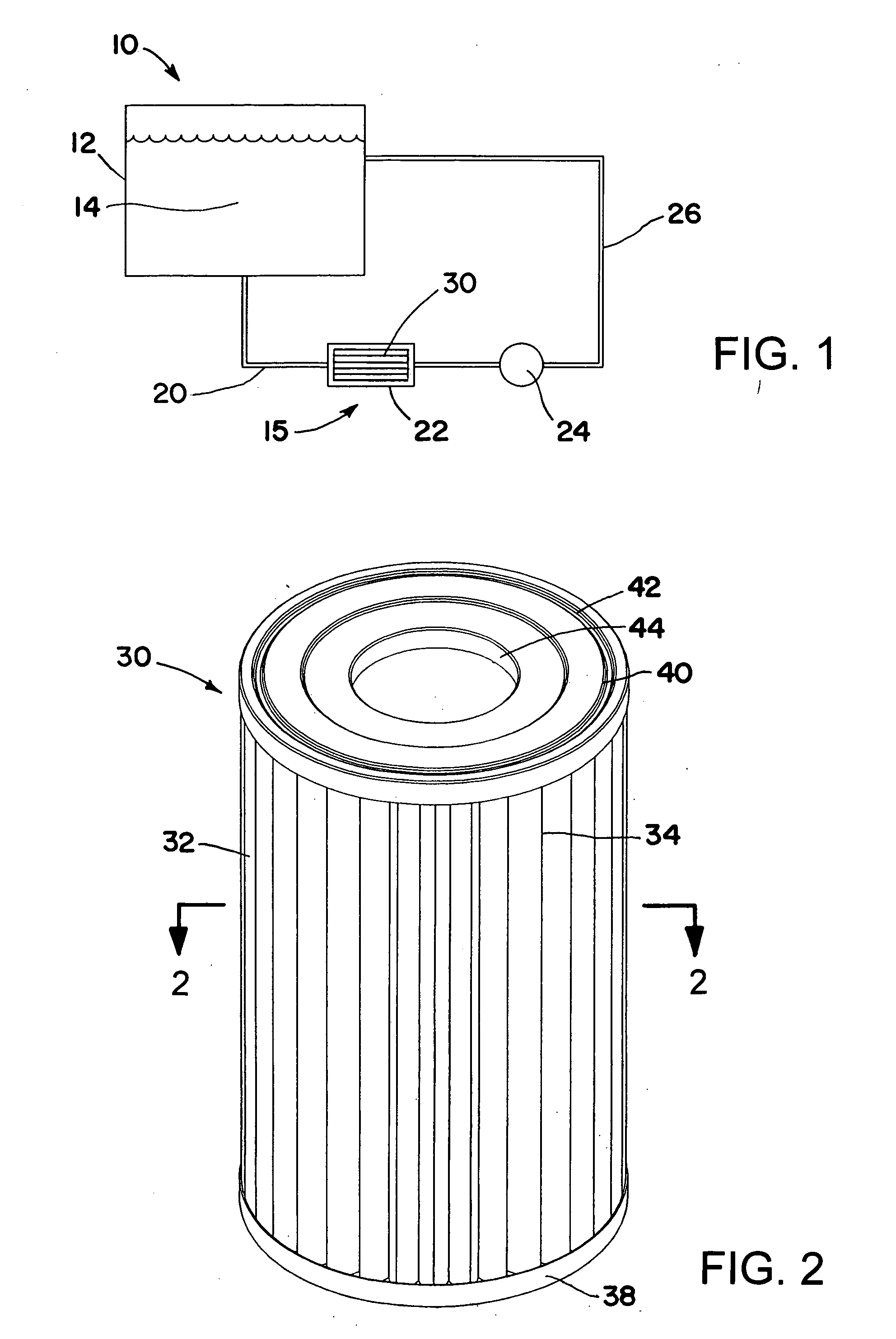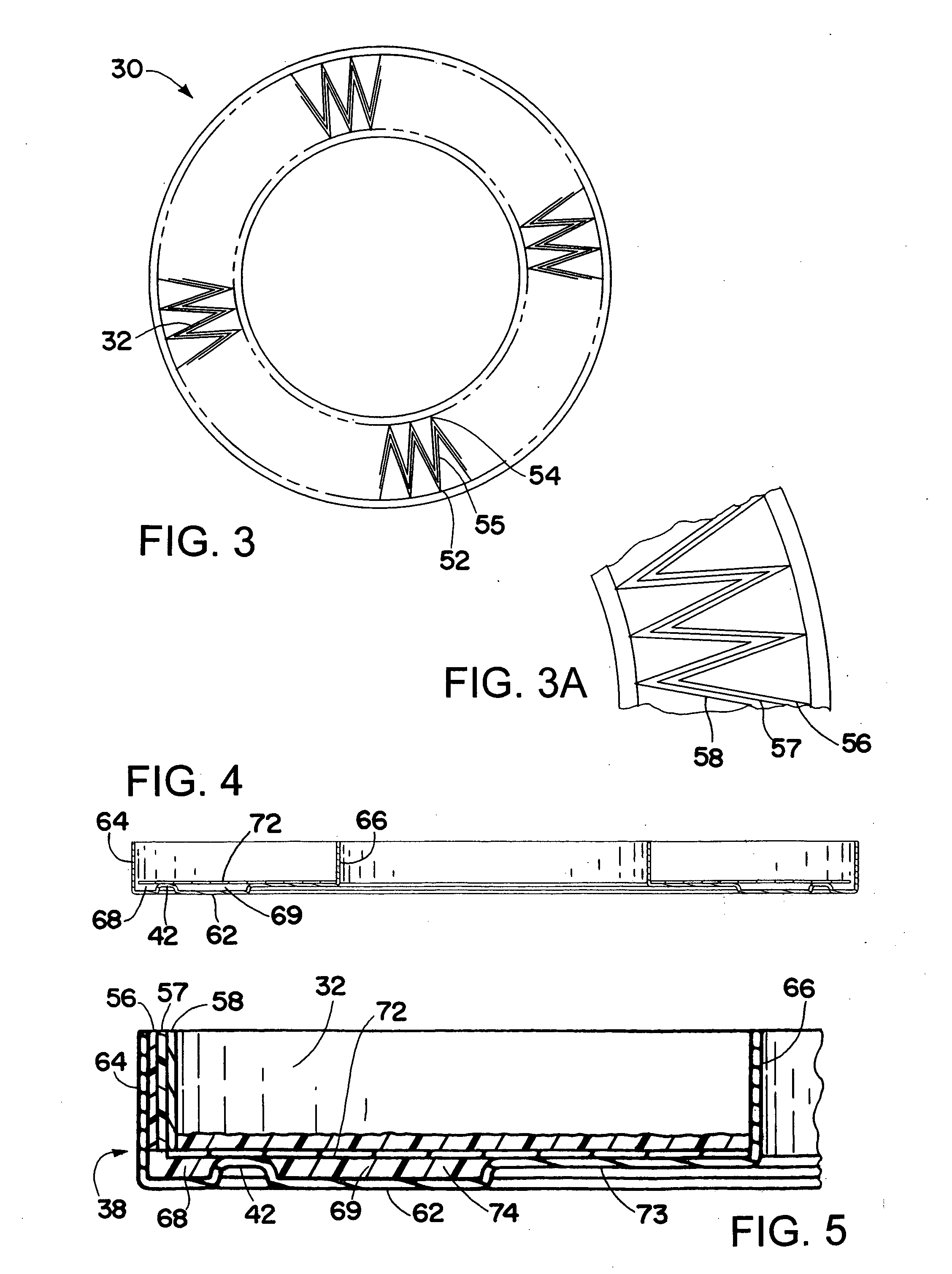Cooking oil filter element and method
a filter element and cooking oil technology, applied in the direction of moving filter element filter, filtration separation, separation process, etc., can solve the problems of unsuitable cooking oil for other types of foods without changing the cooking oil, oil unsuitable for other types of foods, and contaminated cooking oil, etc., to prolong the useful life of cooking oil, reduce cooking oil costs, and prolong the effect of li
- Summary
- Abstract
- Description
- Claims
- Application Information
AI Technical Summary
Benefits of technology
Problems solved by technology
Method used
Image
Examples
Embodiment Construction
[0021] Referring now to the drawings in detail, and initially to FIG. 1, a frying system is schematically illustrated at 10. The frying system 10 includes a vat 12 for holding and heating an edible cooking oil 14 in which food can be cooked. An oil filtration system 15, including an intake pipe 20 having an in-line filter housing 22, a pump 24, and a return pipe 26, is connected to the vat 12. The filter intake pipe 20 connects the bottom of the vat 12 to the pump 24 via the filter housing 22. The return pipe 26 connects the pump 24 back to the vat 12. The filter housing 22 contains a filter element 30 for filtering the cooking oil 14. In this configuration, the pump 24 draws the cooking oil 14 from the bottom of the vat 12 through the filter intake pipe 20 and in-line filter housing 22. The cooking oil 14 is filtered as it passes through the filter element 30. The cooking oil 14 is then pumped back to the vat 12 via the return pipe 26.
[0022] Referring to FIG. 2, the filter element...
PUM
| Property | Measurement | Unit |
|---|---|---|
| diameter | aaaaa | aaaaa |
| diameter | aaaaa | aaaaa |
| diameter | aaaaa | aaaaa |
Abstract
Description
Claims
Application Information
 Login to view more
Login to view more - R&D Engineer
- R&D Manager
- IP Professional
- Industry Leading Data Capabilities
- Powerful AI technology
- Patent DNA Extraction
Browse by: Latest US Patents, China's latest patents, Technical Efficacy Thesaurus, Application Domain, Technology Topic.
© 2024 PatSnap. All rights reserved.Legal|Privacy policy|Modern Slavery Act Transparency Statement|Sitemap



